The earth moves. For many of us, that’s about all we know about earthquakes. But there’s much more to them than we realize. We’re giving you the facts to educate and to warn you since having information is the greatest weapon we have against this force of nature.
These land shifts don’t only happen on our planet but also on the Moon, where they’ve recorded earthquakes that are stronger than the ones on Earth.
Does every earthquake suck people into the Earth? Can’t you just run outside and see where the ground is splitting to avoid being hurt? It’s these and other questions we’ll answer as we tap into facts about earthquakes.
9 Interesting facts About Earthquakes
- According to USGS there are 500,000 detectable earthquakes in the world annually
- Almost 90% of the world’s earthquakes occur in the ‘ring of fire’ region
- Central China witnessed the deadliest recorded earthquake in 1556
- Chile had the largest reported earthquake of 9.5 magnitude
- In the US the largest reported earthquake had a magnitude of 9.2
- The majority of earthquakes happen at depths under 80 km from the Earth’s surface
- Alaska state is one of the most seismically active regions in the world
- For major earthquakes, moment magnitude is the most reliable size indicator
- In 2023, a magnitude of 7.8 earthquake killed 20,000 people in Syria and Turkey
Understanding Earthquake Phenomenon
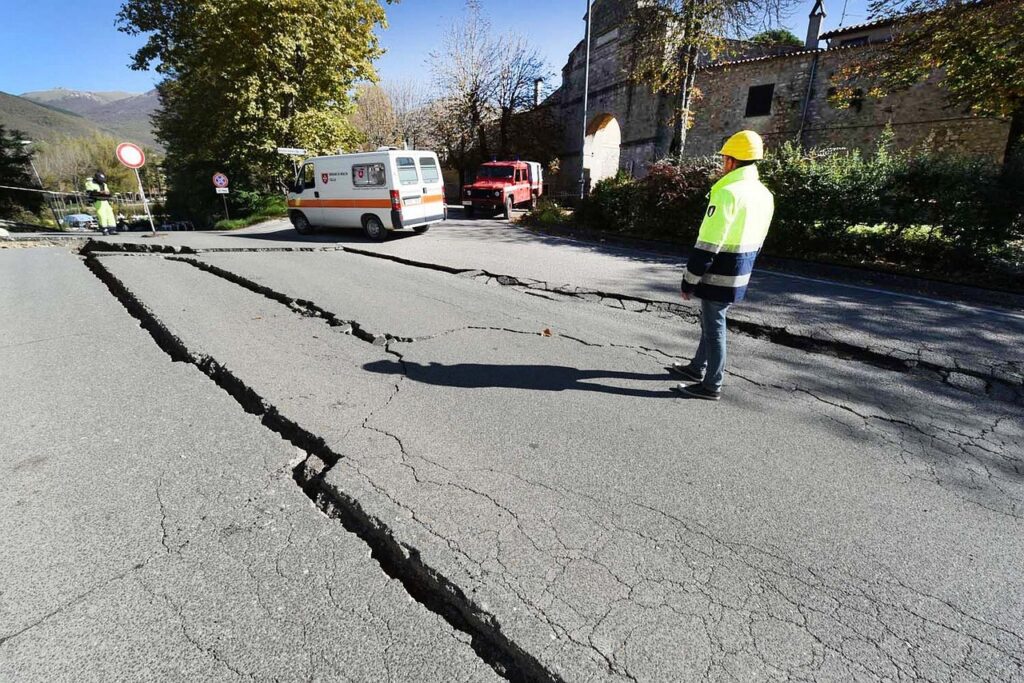
Without getting too much into the weeds, let’s talk about our earth to better understand things. Earth’s interior is made up of three main layers: The crust, mantle, and core. Earth’s outer shell is the lithosphere. It’s broken up into seven major and minor tectonic plates. These plates divide Earth’s crust and constantly move. That motion shapes our landscapes.
Plate tectonics have become our geology, forming the largest mountain ranges and the most massive oceans. The plates constantly slide in different directions and past each other like a giant slow-moving blender.
When the edges of tectonic plates get stuck due to friction, there is an earthquake. It happens when the edges overcome the friction. The quake releases waves of energy that “travel through the earth’s crust and cause the shaking that we feel,” according to the United States Geological Survey.
As explained by the Institute of Physics (IOP), climate change exacerbates earthquakes due to global warming that melts glaciers and causes sea levels to rise. Earth becomes seismically turbulent and causes quakes, landslides, tsunamis, and volcanic eruptions.
Melting glaciers cause the incredible weight on Earth’s crust to become lighter. When the crust bounces back, called “isostatic rebound,” the process can trigger seismic activity.
For us to understand earthquakes, we must study them. Let’s continue to learn more about these iconic natural disasters.
Facts About Earthquakes
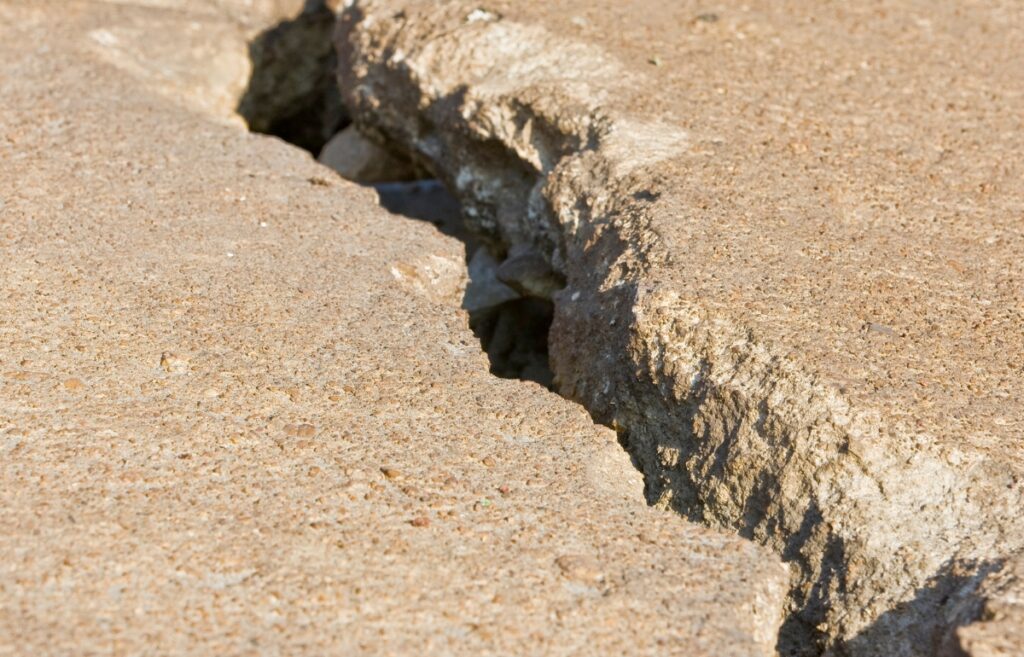
Let’s delve into the unexpected twists and turns of the planet’s dynamic movements:
According to USGS, There Are 500,000 Detectable Earthquakes in the World Annually. (USGS)
People can feel 100,000 of those, but there are quakes with magnitude 2.0 and smaller that can’t be felt. One hundred of those that can cause damage.
Every Day, Hundreds of Earthquakes with Magnitudes of 2 and Smaller Take Place Globally. (NSF Sage)
Every day, hundreds of magnitude 2 and smaller earthquakes occur globally. Major ones above magnitude 7 happen monthly. “Great earthquakes,” magnitude 8 and higher, occur annually.
It might take several million quakes (medium-sized) to create a mountain system. This would happen over tens of millions of years.
Almost 90% of the World’s Earthquakes Occur in the ‘Ring of Fire’ Region. (USGS)
The “Ring of Fire” is the earthquake zone that surrounds the Pacific Ocean. The second most seismic area, which is 5%-6% of earthquake activity, is called the Alpide belt. It stretches from the Mediterranean region eastward through Iran, Turkey, and India.
Central China Witnessed the Deadliest Recorded Earthquake in the World in 1556. (USGS)
In the wee hours of the morning, at 3:42 a.m., the world’s deadliest quake lasted for 23 seconds and killed 830,000 people. It leveled 90% of Tangshan’s buildings.
Chile Had the Largest Reported Earthquake in the World, Recorded at 9.5 Magnitude (Mw) in 1960. (USGS)
The rupture zone stretched from 311–621 miles. It’s called “Valdivia” after the city it most affected off the coast of southern Chile. Two million people were rendered homeless.
During the 1960 Chilean Earthquake, Seismographs Detected Seismic Waves That Propagated Globally. (Geophysical Journal International)
The rupture triggered a large tsunami that damaged other areas around the Pacific Ocean, including Japan, Hawaii, and the Philippines. (American Geophysical Union)
Estimated fatalities were between 490–5,700, and 2 million people were left homeless.
According to Scientists, the 2004 Sumatran Earthquake of Magnitude 9.1 Has Reduced the Day’s Length by 6.8 ms. (USGS)
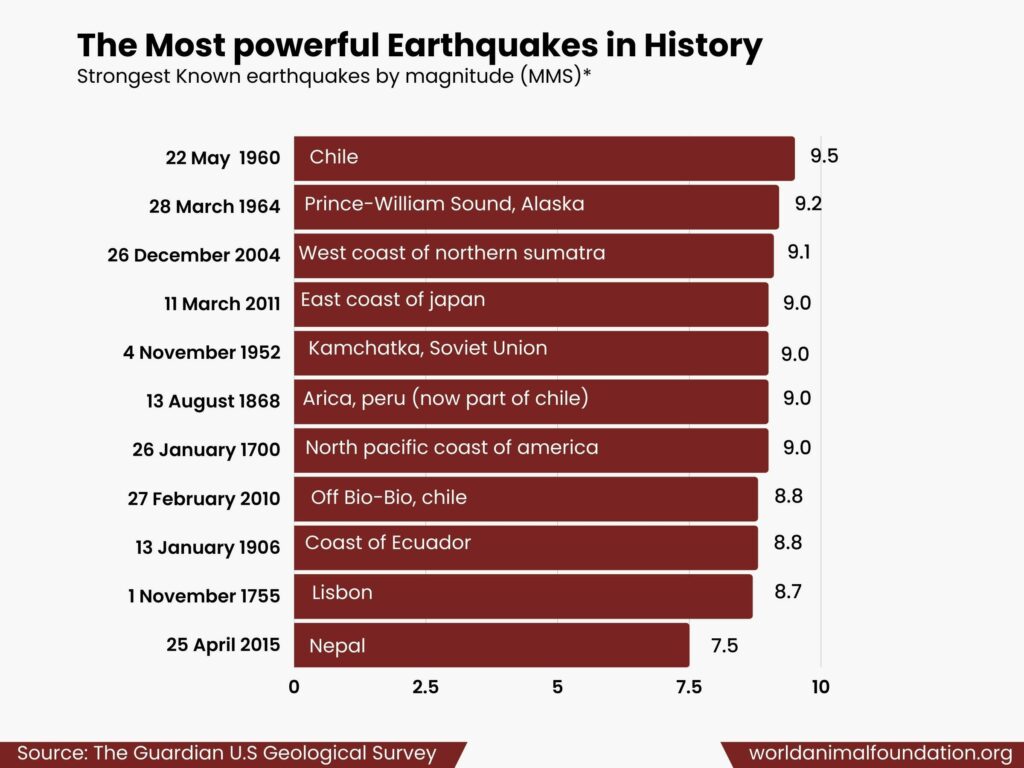
The Sumatran quake also should have shifted Earth’s axis by 2.32 Milliarcseconds (2.76 inches). Additionally, the magnitude 8.8 Chilean earthquake occurred and may have shortened the day’s length by about 1.26 microseconds (one-millionth of a second).
ShakeAlert Systems Identify First Waves and Provide Warnings Ahead of an Earthquake’s Major Tremors. (Shakealert)
Managed by the US Geological Survey, the purpose of the system is to save lives and property. The system could alert people to protect themselves or to begin automated systems like slowing trains, turning on generators, etc.
On December 26, 2004, an Undersea Earthquake in the Indian Ocean Set Off a Sequence of Catastrophic Tsunamis. (NIH)
The ocean floor rose as much as 131 feet, and within 20 minutes of the quake, 100-foot waves hit Banda Aceh, Indonesia. It crushed the city and killed more than 100,000 people. (World Vision)
In Recent Years Haiti’s Earthquake Was a Massive One and Killed Around 316,000 People. (Reuters)
On January 13th, 2010, a 7.0 magnitude large earthquake happened and crumbled Port-au-Prince, Haiti’s capital, and killed 316,000 people. The United Nations estimated that 80,000 buildings had been destroyed by the powerful earthquake.
In 2023, a Magnitude of 7.8 Earthquake Killed 20,000 People in Syria and Turkey. (NPR)
There was an exhaustive search and rescue effort which was thwarted due to an aftershock sequence in the area within 24 hours. There were at least 55 quakes at magnitude 4.3 or greater.
Worst Earthquake in US History
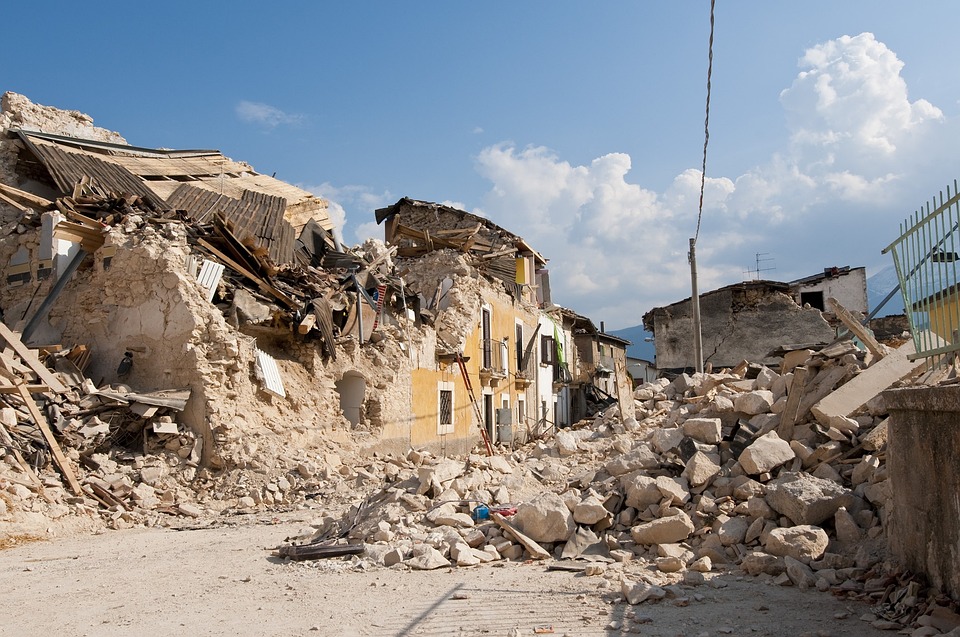
Step back in time and explore the annals of Earth’s history, where some of the most powerful and awe-inspiring forces have left their mark:
In the US the Largest Reported Earthquake Had a Magnitude of 9.2 (Mw). (USGS)

The quake lasted 4.5 minutes and is the second-largest recorded earthquake. (The M9.5 earthquake in Chile in 1960 is the first.) It happened in the Prince William Sound area of Alaska.
The Largest Continental U.S. Earthquake Occurred on January 26, 1700, Around 9 PM Pacific Time. (USGS)
It happened along the Pacific Northwest coast as far as northern California. Japan recorded the Cascadia earthquake, so geologists were able to estimate the time.
In 1769, the Earliest Earthquake Was Felt in California. (USGS)
An exploring exhibition of Gaspar de Portola felt the quake. They had been camping southeast of Los Angeles. This was the earliest reported, not documented, earthquake.
In the US, a Few Highly Powerful Earthquakes Occurred on the New Madrid Fault in the Mississippi Valley in 1811-1812. (USGS)
These quakes lasted for several months, including three large ones measuring a magnitude 7 and 8. It destroyed settlements along the Mississippi River and was felt in:
- Cincinnati, OH
- St. Louis, MO
- Hartford, CT
- Charleston, SC
- New Orleans, LA
Back in 1663, the European Settlers in the US Experienced Their First Earthquake. (USGS)
Measuring 7.3 to 7.9 on the Richter scale, the Great New England Earthquake of 1663 affected colonists in Quebec City, New York, Boston, and Portland. People speculated it was God’s wrath, and people swarmed churches.
Since 1900, 4 of the World’s Largest 20 Earthquakes Occurred in Alaska. (USGS)
The number of M3+ earthquakes in Alaska from 2010 to 2015 was 2245, 1409, 1166, 1329, 1296, and 1575, respectively. These numbers are by far the highest number of quakes in the US during those years and make Alaska the most earthquake-prone state.
Earthquake Statistics
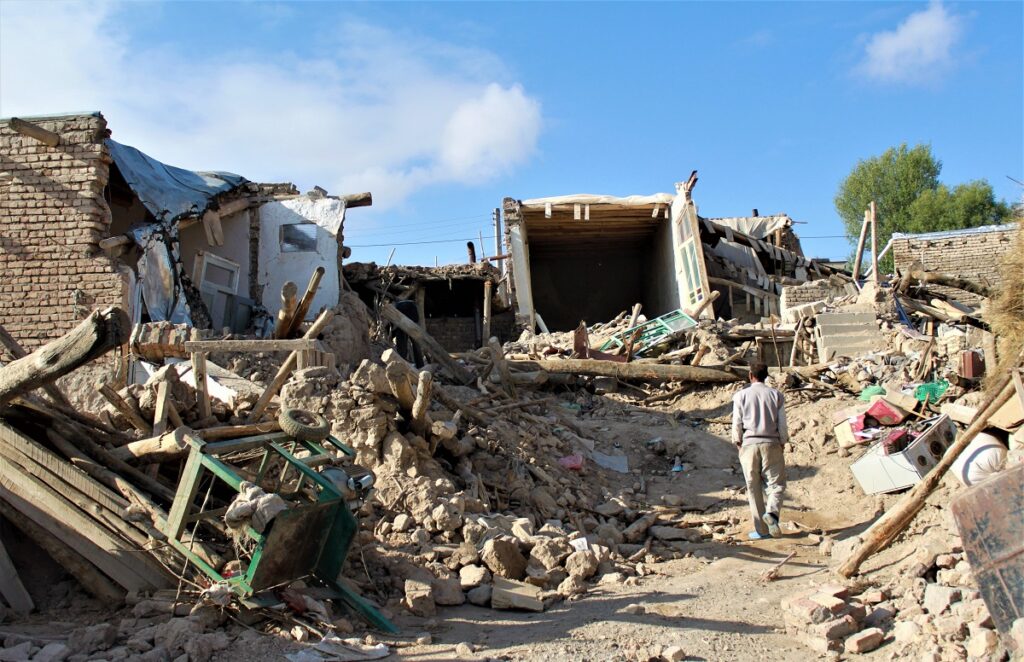
These earthquake statistics unveil the scale and impact of seismic events across time and continents:
The First Earthquake Evidence Is from 1831 BC in China, with a Detailed Record from 780 BC in the Zhou Dynasty. (USGS)
The 1831 BC Mount Tai earthquake in China is seen as the first recorded quake in Chinese history. The mountain is the highest point in Shandong province, China, and is historically significant.
The Majority of Earthquakes Happen at Depths Under 80 km from the Earth’s Surface. (USGS)
Large earthquakes occur as deep as 500 miles below the earth’s surface. Depending on how far it is from the crust or mantle is directly related to the strength of shaking experienced.
In the Southern Part of California, Annually 10,000 Earthquakes Occur. (USGS)
Most of them can’t even be felt, but some are more than magnitude 3.0. About 15-20 are greater than that. (4.0+) If the quake is large, aftershocks can be of any magnitude and can last for months.
Alaska State Is One of the Most Seismically Active Regions in the World. (USGS)
As the state with the most earthquakes than the rest of the US combined, a magnitude 7 can be experienced by ¾ of the state’s population due to where they live. There is even a team, the Alaska Earthquake and Tsunami Hazards team, that studies how, why, and where these events happen in Alaska.
The 386 km Wasatch Fault Has Segments Capable of Causing M7.5 Earthquakes. (USGS)
The Wasatch Range is made up of segments and has experienced an M6.5+ once every 350 years. That is now how long it has been since the last major earthquake.
Florida, Iowa, North Dakota, and Wisconsin Didn’t Have Any Earthquakes from 1975-1995. (USGS)
This is due to the difference in crust movements. In California, plates grind against each other, whereas in Virginia, it lies in the middle of a plate. Florida has the least seismic activity in the US.
Information About Earthquakes
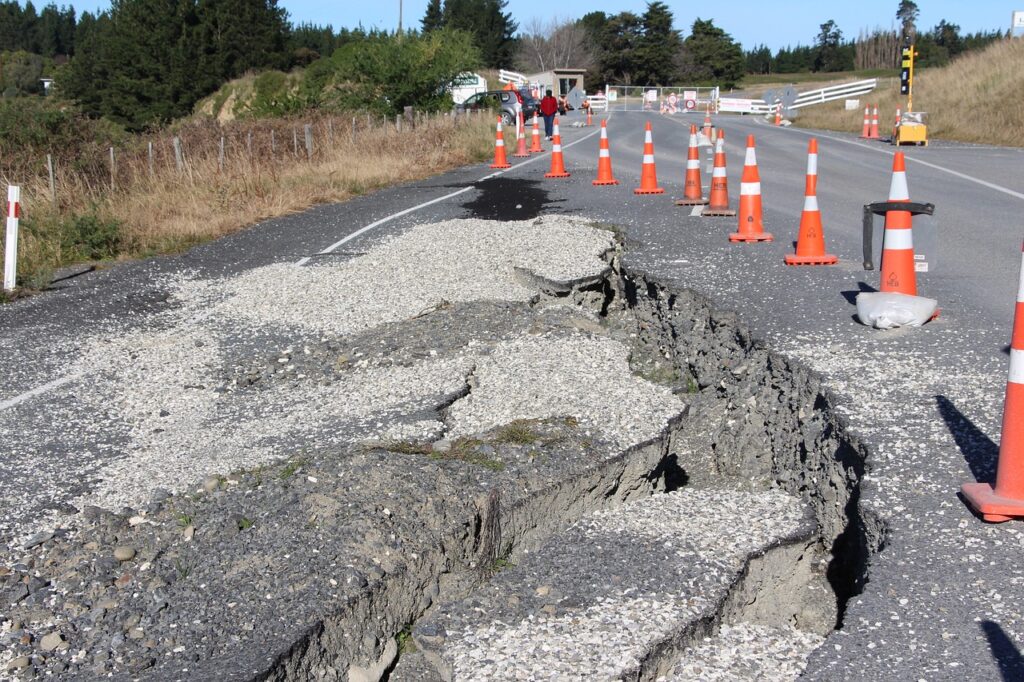
Let’s explore the dynamics, impacts, and essential knowledge that shape our understanding of these powerful natural occurrences:
Before Electronic Recordings, Scientists Used Massive Spring-Pendulum Seismometers to Capture the Long-Period Motion of Big Earthquakes. (USGS)
(A seismometer is “an instrument that responds to ground noises and shaking such as caused by quakes, volcanic eruptions, and explosions.”) The largest seismometer weighed 15 tons. Currently, there is one three stories high in Mexico City.
For Major Earthquakes, Moment Magnitude Is the Most Reliable Size Indicator. (USGS)
Moment = A physical quantity directly related to the fault slip multiplied by the fault surface area that slips. It is equal to the total energy released in an earthquake.
The Fastest and the First Wave to Appear Is Called the ‘P Wave.’ (USGS)
In S waves (shear waves), rock moves perpendicular to the wave direction. They travel around 60% of the speed of P waves. The S waves always occur after the P wave.
Small Earthquakes Shake Briefly, but Moderate to Large Ones Can Last for Minutes. (PNSN)
There are foreshocks and aftershocks. Foreshocks are earthquakes that happen in the same area as larger earthquakes. Aftershocks also happen in the same area and follow a major event or “main shock.” These can happen days to years later.
There Are 20 Constantly Moving Plates in Earth’s Crust. (NOAA)
Earth’s crust, the lithosphere, holds those plates that fit tightly against each other.
The plates move when radioactive events (heat) within the interior stimulate them. This motion is called tectonic shift or plate motion.
Over the Last 3 Million Years, the San Andreas Fault Zone Has Shown an Average Motion Rate of 2 Inches per Year. (USGS)
The San Andreas Fault reaches at least 10 miles down into the earth and is more than 800 miles long. Roads in the zone have everything from small fractures to fault gouges which are pulverized rock.
A 50-60 km Wide Area of Active Volcanic Activities in Africa Is ‘The East African Rift System.’ (USGS)
This is an area of more than 1,864 miles and stretches from Ethiopia to Zambezi. It’s known to be rare since it’s an active continental rift zone. This means a continental plate is trying to split while moving away from each other.
In 1751, the First Pendulum Seismoscope Was Developed to Measure the Shaking of the Earth During an Earthquake. (USGS)
The earliest seismoscope was invented in 132 A.D. by Chang Heng. In the 18th century, seismoscopes of questionable effectiveness were developed. In the 19th century, Palmieri invented one to record the times of small quakes.
Earthquake Facts for Kids

- Just below the earth’s surface, there is constant movement. There are slabs called “plates” that are moving against each other. When unusual shifts happen, there is an earthquake. Although they can be dangerous, they are how our mountain ranges and oceans were created.
- During an earthquake, it’s safest to “drop, cover, and hold on!” – get down, take cover under a table, and hold on until the shaking stops.
- Earthquake waves can travel at the speed of 18,000 miles per hour; that’s faster than a jet airplane!
- Some big human activities, like mining or filling reservoirs, can trigger small earthquakes.
- Animals like dogs, cats, and elephants often sense earthquakes before they happen due to their keen senses.
FAQs
When Was the First Earthquake?
In 1831 B.C., the earliest recorded quake happened in the Shandong province of China.
What Causes an Earthquake?
Tectonic plates, irregularly shaped slabs of solid rock, are constantly moving. When they get wedged at their edges due to friction, the stress on the edge overcomes the friction. Energy via waves is created that cause an earthquake/shaking.
How Many Earthquakes a Year Are Actually Strong Enough to Damage Property?
Roughly 100 earthquakes a year around the world cause damage.
How Many Earthquakes Happen in a Year?
There are around 500,000 earthquakes that can be felt around the world each year.
How Many Earthquakes Does California Have a Year?
California experiences thousands of earthquakes each year. Most of these are too small to be felt, but the state typically has around 10,000 to 20,000 earthquakes annually. California gets around two or three quakes yearly that are large enough to cause structural damage, which is a magnitude 5.5 and higher.
On Average, How Many Damaging Earthquakes Occur Each Year?
Of the 500,000 quakes that occur each year, 100 of them cause damage.
How Long Can Earthquakes Last?
It largely depends on the size of the quake. Smaller ones typically last a few seconds, while larger ones can last a couple of minutes.
What Does an Earthquake Look Like?
An earthquake itself is not something you can “see” with your eyes like a physical object. It’s a natural event that happens beneath the Earth’s surface. During an earthquake, the ground shakes, and sometimes you might see buildings swaying, objects moving, or even the ground cracking.
What Three Things Can Powerful Earthquakes Cause?
- Ground shaking
- Surface faulting
- Ground failure
And less commonly, tsunamis.
Where Do Earthquakes Occur?
Eighty-one percent of the world’s largest earthquakes occur along the rim of the Pacific Ocean – the circum-Pacific seismic belt.
How Are Earthquakes Formed?
Tectonic plates get stuck at their edges due to friction. An earthquake occurs when the stress on the edges of the plates overcomes the friction. Waves of energy then travel through the earth’s crust and cause it to shake.
Conclusion
The natural way the earth works generally allows things to run smoothly. But when plates shift and the forces we’ve discussed come together, the earthquake phenomenon rears its ugly head.
In the intriguing world of earthquakes, we’ve uncovered surprising truths about the Earth’s dynamic nature. From moonquakes to hidden animal senses, these seismic events remind us of the incredible forces shaping our planet. By understanding and respecting these natural wonders, we’re better prepared to stay safe and marvel at the powerful dance of our ever-changing world.
Let’s hope technology can improve enough to prevent such a force from ever happening again!


